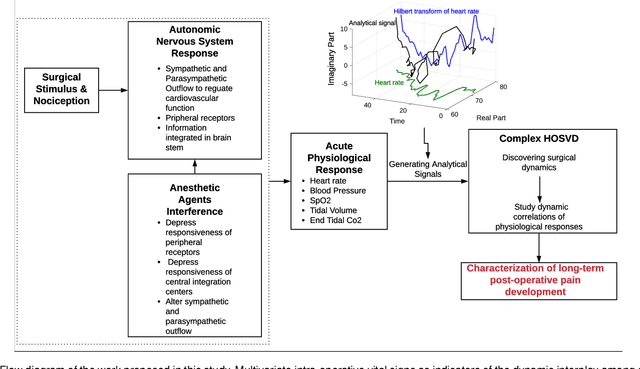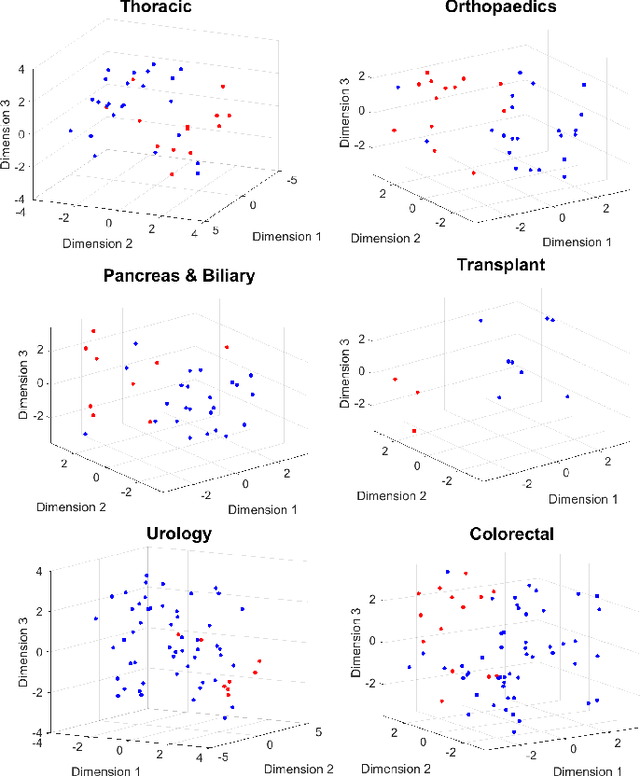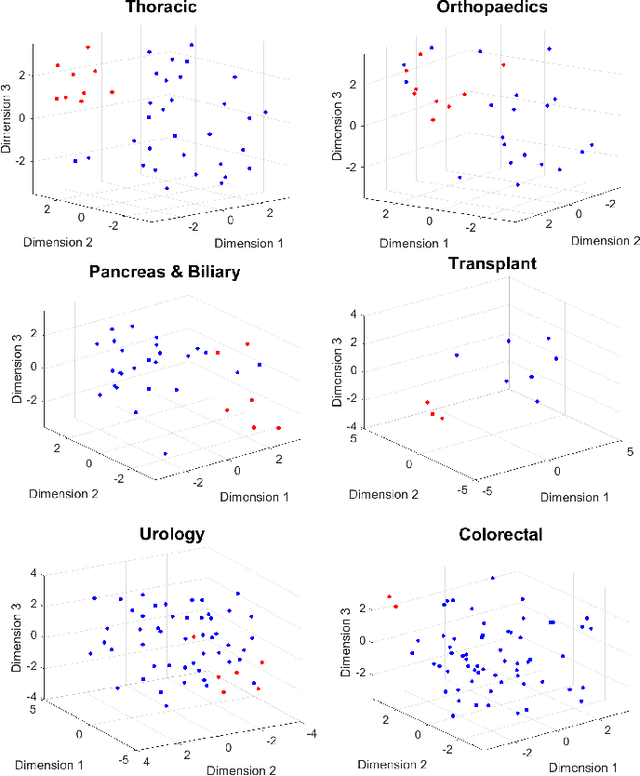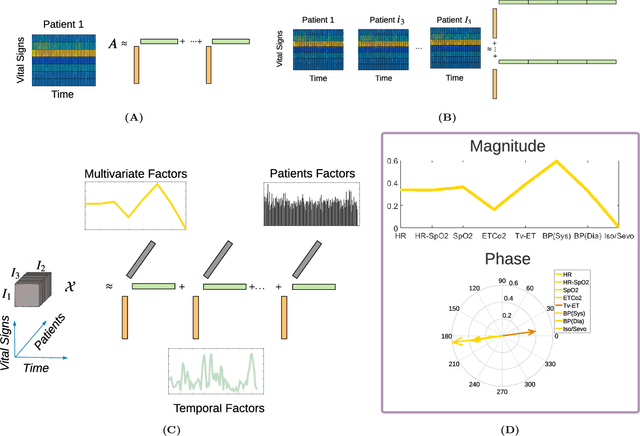Raheleh Baharloo
Analysis of Intra-Operative Physiological Responses Through Complex Higher-Order SVD for Long-Term Post-Operative Pain Prediction
Sep 02, 2021



Abstract:Long-term pain conditions after surgery and patients' responses to pain relief medications are not yet fully understood. While recent studies developed an index for nociception level of patients under general anesthesia, based on multiple physiological parameters, it remains unclear whether and how dynamics of these parameters indicate long-term post-operative pain (POP). To extract unbiased and interpretable descriptions of how physiological parameters dynamics change over time and across patients in response to surgical procedures, we employed a multivariate-temporal analysis. We demonstrate the main features of intra-operative physiological responses can be used to predict long-term POP. We propose to use a complex higher-order SVD method to accurately decompose the patients' physiological responses into multivariate structures evolving in time. We used intra-operative vital signs of 175 patients from a mixed surgical cohort to extract three interconnected, low-dimensional complex-valued descriptions of patients' physiological responses: multivariate factors, reflecting sub-physiological parameters; temporal factors reflecting common intra-surgery temporal dynamics; and patients factors, describing patient to patient changes in physiological responses. Adoption of complex-HOSVD allowed us to clarify the dynamic correlation structure included in intra-operative physiological responses. Instantaneous phases of the complex-valued physiological responses within the subspace of principal descriptors enabled us to discriminate between mild versus severe levels of long-term POP. By abstracting patients into different surgical groups, we identified significant surgery-related principal descriptors: each of them potentially encodes different surgical stimulation. The dynamics of patients' physiological responses to these surgical events are linked to long-term post-operative pain development.
 Add to Chrome
Add to Chrome Add to Firefox
Add to Firefox Add to Edge
Add to Edge